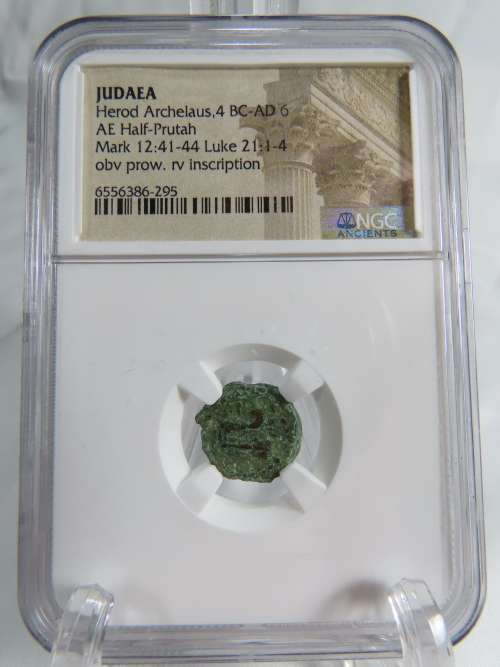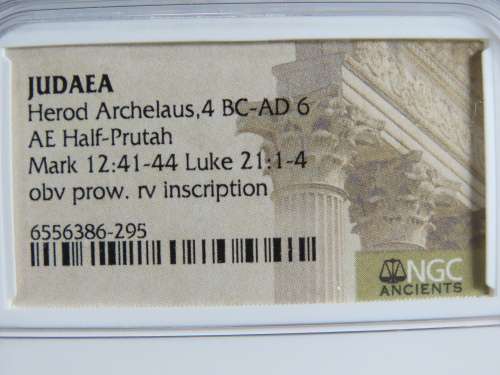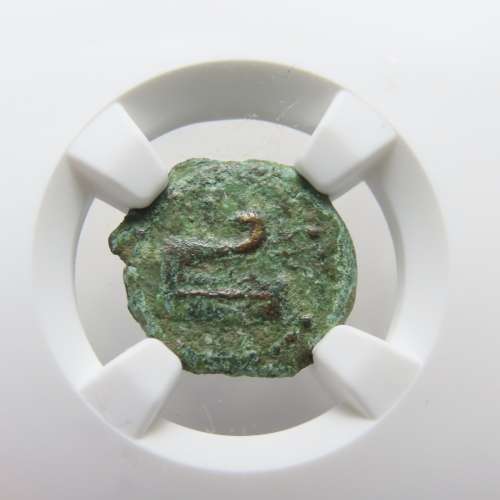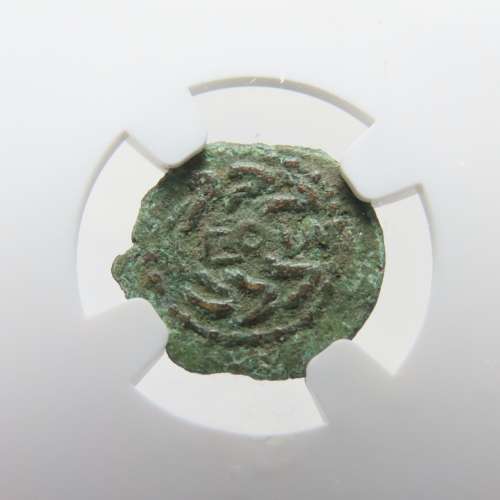









Ancient Judaea Half Prutat Coin, 4 BC NGC Herod Archelaus
Check my rate
| Main centres: | 1-3 business days |
| Regional areas: | 3-4 business days |
| Remote areas: | 3-5 business days |










| Main centres: | 1-3 business days |
| Regional areas: | 3-4 business days |
| Remote areas: | 3-5 business days |
Ancient Judaea
2000 Year Old Copper Half Prutah Coin
From the Year 4 BC to 6 AD





A Half Prutah of Herod Archelaus. Dating it to the year 4 BCE to 6 CE
Judaea was a Roman province which incorporated the regions of Judea, Samaria, and Idumea from 6 CE, extending over parts of the former regions of the Hasmonean and Herodian kingdoms of Judea. The name Judaea, like the similar Judea, was derived from the Iron Age Kingdom of Judah, but the Roman province encompassed a much larger territory.
Herod Archelaus was the ethnarch of Samaria, Judea, and Idumea, including the cities Caesarea and Jaffa, for nine years(c.4 BC to AD 6). He was the son of Herod the Great and Malthace the Samaritan, brother of Herod Antipas, and half-brother of Herod II. Archelaus (a name meaning "leading the people") came to power after the death of his father Herod the Great in 4 BC, and ruled over one-half of the territorial dominion of his father. Archelaus was removed by the Roman emperor Augustus when Judaea province was formed under direct Roman rule, at the time of the Census of Quirinius.
The prutah was an ancient copper coin of the Second Temple period of Israel with low value. A loaf of bread in ancient times was worth about 10 prutot (plural of prutah). One prutah was also worth two lepta (singular lepton), which was the smallest denomination minted by the kings of the Hasmonean and Herodian dynasties.
Prutot were also minted by the procurators of Roman Judaea, and later were minted by the Jews during the First Jewish-Roman War (sometimes called "Masada coins").
The coinage is characteristic of the early Jewish coinage in that it avoided human or animal representations, in opposition to the surrounding Greek, and later Roman types of the period. Jewish coinage instead focused on symbols, either natural, such as the palm tree, the pomegranate or the star, or man-made, such as the Temple, the Menorah, trumpets or cornucopia.